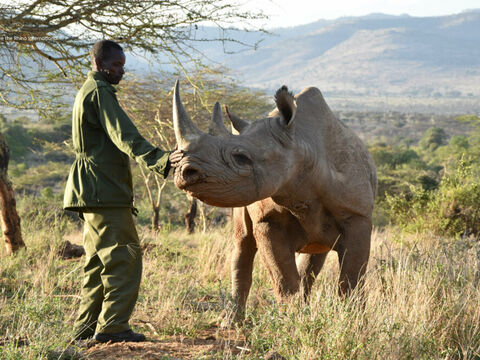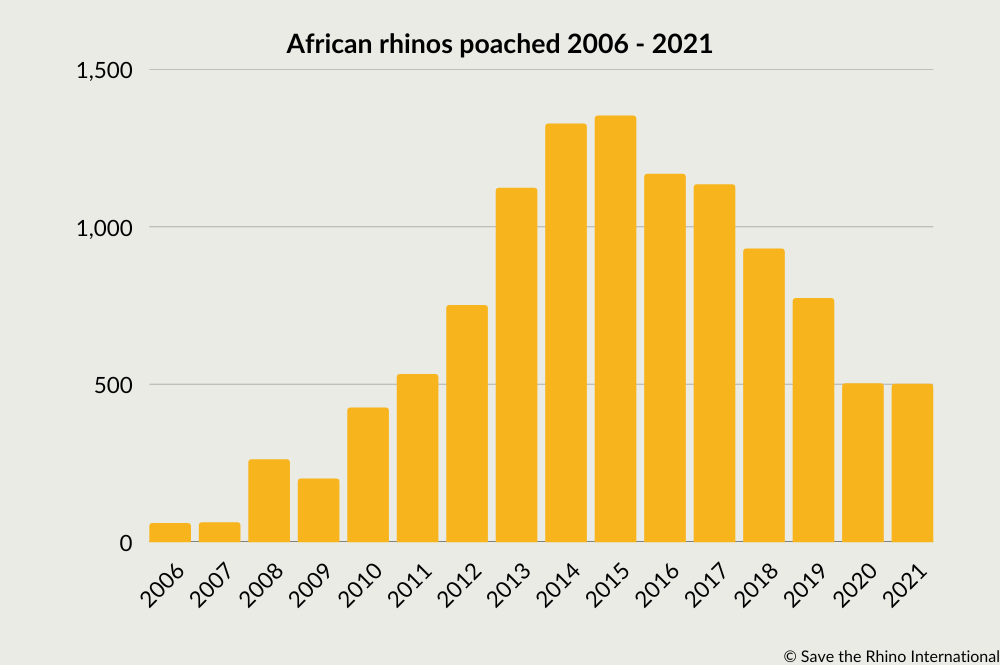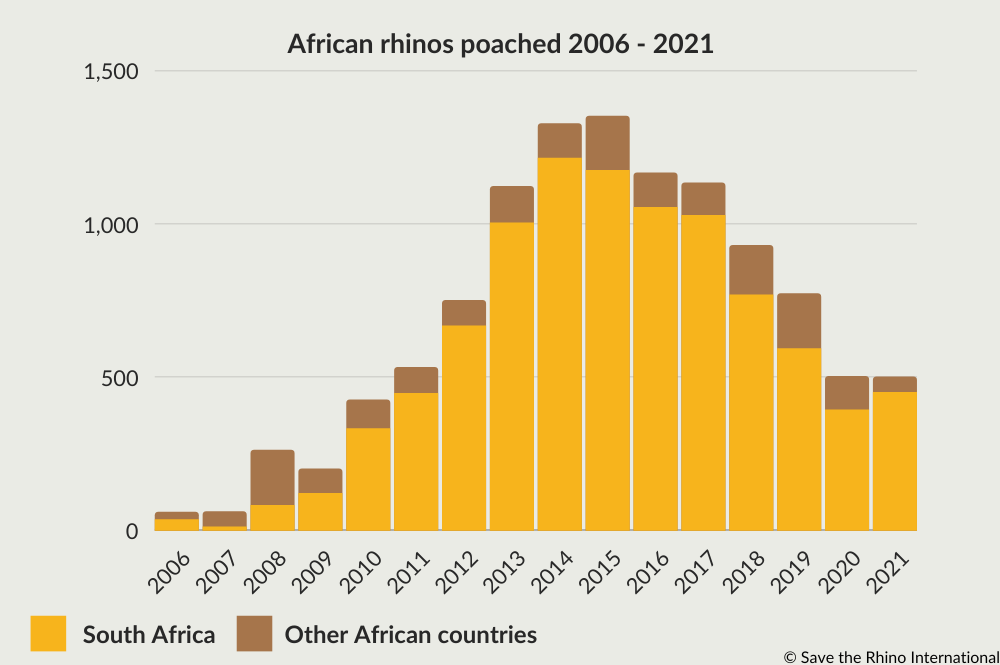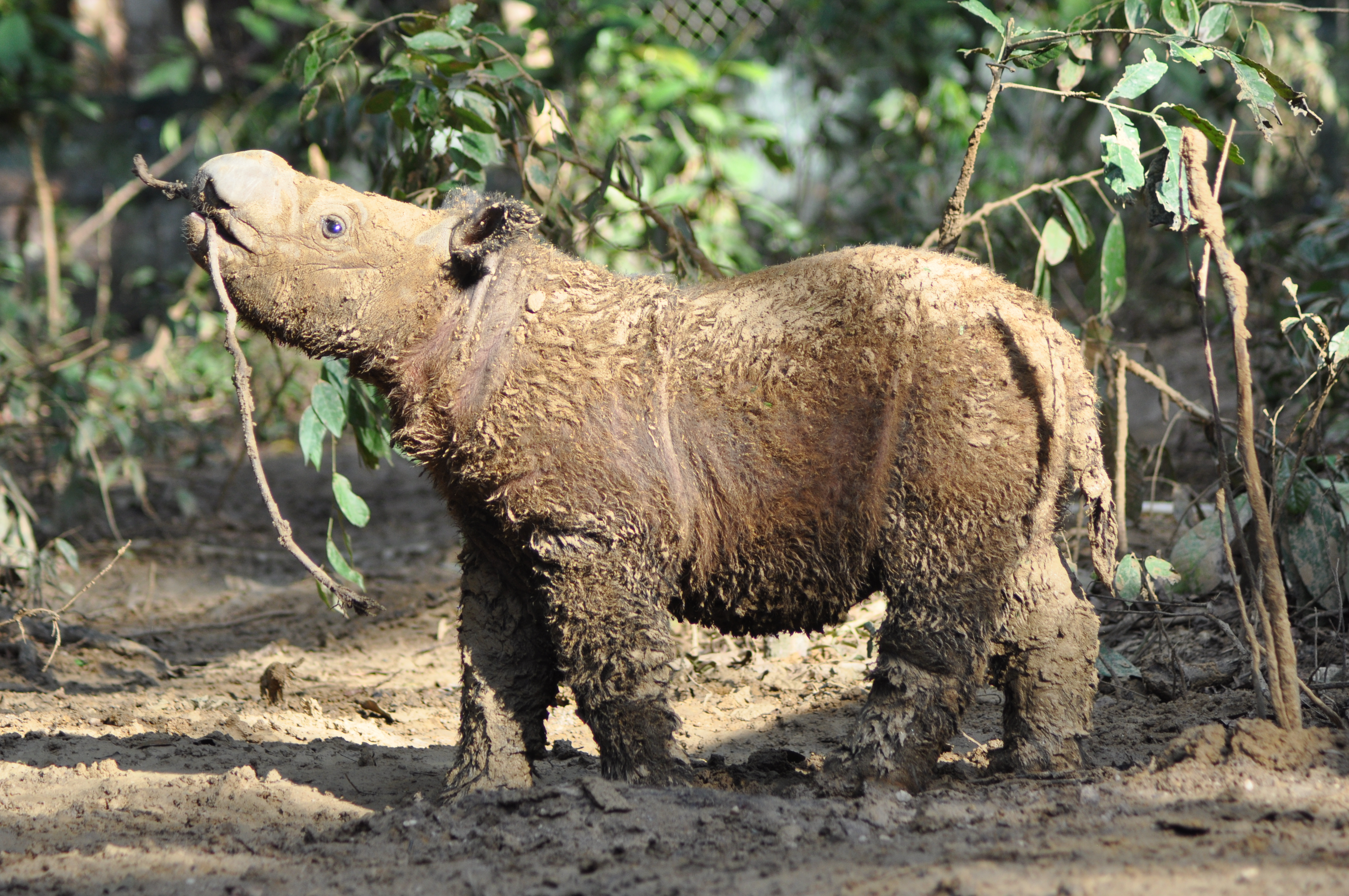
Why the rhino needs saving
The rhinoceros, or rhino as it's better known, is one of the most beautiful animals on the planet, however, for more than a decade, there have been two major crises in rhino conservation: a rise in poaching, and habitat loss. Either one of these challenges is devastating on its own. Together, they have put rhinos at enormous risk.
The threat posed by poachers is by far the greatest. These people want to steal rhino horns for their value and supposed - but unproven - medical benefits, and kill them in the process.
At the current rate of poaching, rhinos will disappear from our planet within 10 years.
Increasing the protection and monitoring of rhinos will reduce the key threats of shrinking habitat and poaching, and help give all five species of rhinos a future
In the last decade, 9,885 African rhinos have been lost to poaching!

The threats facing rhinos and what we can do about them
There are just 30,000 rhinos left in the wild across Africa and Asia, and poaching is still a massive problem for these gentle giants. In just one decade, just under a quarter of all the rhinos in the world were killed by poachers.
As South Africa is home to the majority of rhinos in the world, it is being heavily targeted. More than ever, field programmes are having to invest heavily in anti-poaching activities. In 2021, 451 rhinos were killed in South Africa. It’s the first time in six years that the country has recorded an increase in rhino poaching incidents: an extremely sad reality.

Poaching has increased in some areas of Africa in recent years; across Zimbabwe, Kenya and Namibia, and to counteract this it's important that the rhinos have a secure habitat, well-trained and equipped rangers, and are monitored. Without this in place, poachers could wipe out entire populations of Rhinos.
In the case of the Sumatran rhino, the more immediate threat is the loss of their habitat, as vast swathes of land are cleared to make new homes, for logging, and to grow crops. In some countries such as Nigeria, Vietnam, and Bangladesh, the rhino has now disappeared altogether.
Rhinos eat mostly from trees and bushes, chomping on leaves and fruit, so as these areas are cleared, their vital food sources have disappeared.
For more information on rhinos, read more at Save the Rhino International and find out about the vital work this organisation is doing to protect and increase the number of rhinos.
Top five facts about rhinos
1. There are five species of rhino - Sumatran, Javan, White, Black, and the spectacularly named Greater One-Horned.
2. The name rhinoceros means nose horn!
3. Rhinos are herbivores, which means they eat plants and not meat, they use their horns for defence only.
4. The Javan rhino is the world's largest land mammal; there are only 50 Javan rhinos left in the wild and none in captivity.
5. Rhinos are pregnant for up to 16 months!

Save the Rhino International and RHINO Stationery
At RHINO Stationery, we have been partnered with Save the Rhino International since 2006, working alongside the charity to help save these endangered creatures. During that time, we've promoted their work, collected donations on their behalf and donated directly to the charity ourselves. If you would like to donate directly, click here.
With your help, we have donated more than £100,000 to the cause and make a pledge to donate a minimum of £6,000 each year; funds that will help contribute to saving rhinos worldwide. This means that with every purchase of our stationery by our customers, we donate money to keep the most vulnerable rhino species safe and protected.
Every time you shop with RHINO, you are supporting the vital work that Save the Rhino International is doing.

 Rhino Stationery
Rhino Stationery
 My Own Stationery
My Own Stationery
 Aisling Stationery
Aisling Stationery
 Amazon.co.uk
Amazon.co.uk